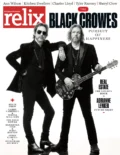
429 Records
One tends to approach a new album from an aging rocker with trepidation. The legacy forged in their heyday is almost always impossible to live up to – particularly when that legacy includes albums of near-biblical stature in the rock canon the likes of Music From Big Pink or The Band. But at a certain point the comparison becomes as irrelevant as it is unfair. Robbie Robertson has been a former member of The Band longer than he was in the band. He’s 67 years old. I don’t expect him to recreate the songs he wrote when he was in his twenties; I want to know what he has to say now. And on How To Become Clairvoyant – his first album in more than a dozen years – Robertson delivers a solid, revealing collection of songs that dwell on memory and longing, ghosts and regret. It is the most sustained, coherent album he’s released as a solo artist.
Robertson enjoys a little help from his friends on nearly every track – Eric Clapton, who appears on seven of the 12 songs, Steve Winwood, Trent Reznor, Tom Morello and Robert Randolph. He also pulls in vocal support from a pair of sublime female singers, Angela McCluskey and Angelyna Boyd, on “When The Night Was Young,” “The Right Mistake,” and “This Is Where I Get Off”. Clapton, Winwood and the others never really leave a certain comfort zone, serving more to burnish the rough-hewn edges of Robertson’s road-weary voice, and focus attention on the story he has to tell. It’s a story that circles back time and again on this album to the tumultuous roller-coaster ride Robertson lived through both during and after his two decades with The Band. On half the tracks of the album – but most notably “He Don’t Live Here No More” and the aforementioned “This Is Where I Get Off” – Robertson is looking in the rear-view mirror, struggling to come to terms with what he sees. But then he can take a half-turn in another direction and lay down a gem like “She’s Not Mine,” a beautiful, haunting song of longing and desire in which both Robertson and Clapton trade solos over Winwood’s shimmering organ. Even the two instrumental tracks on the album (“Madame X” and “Tango For Django”) do not feel like filler, but integral parts of the story.
Robertson’s previous solo work has included some striking songs, but How To Become Clairvoyant is the first album of his that really longs to be played from start to finish.



No Comments comments associated with this post